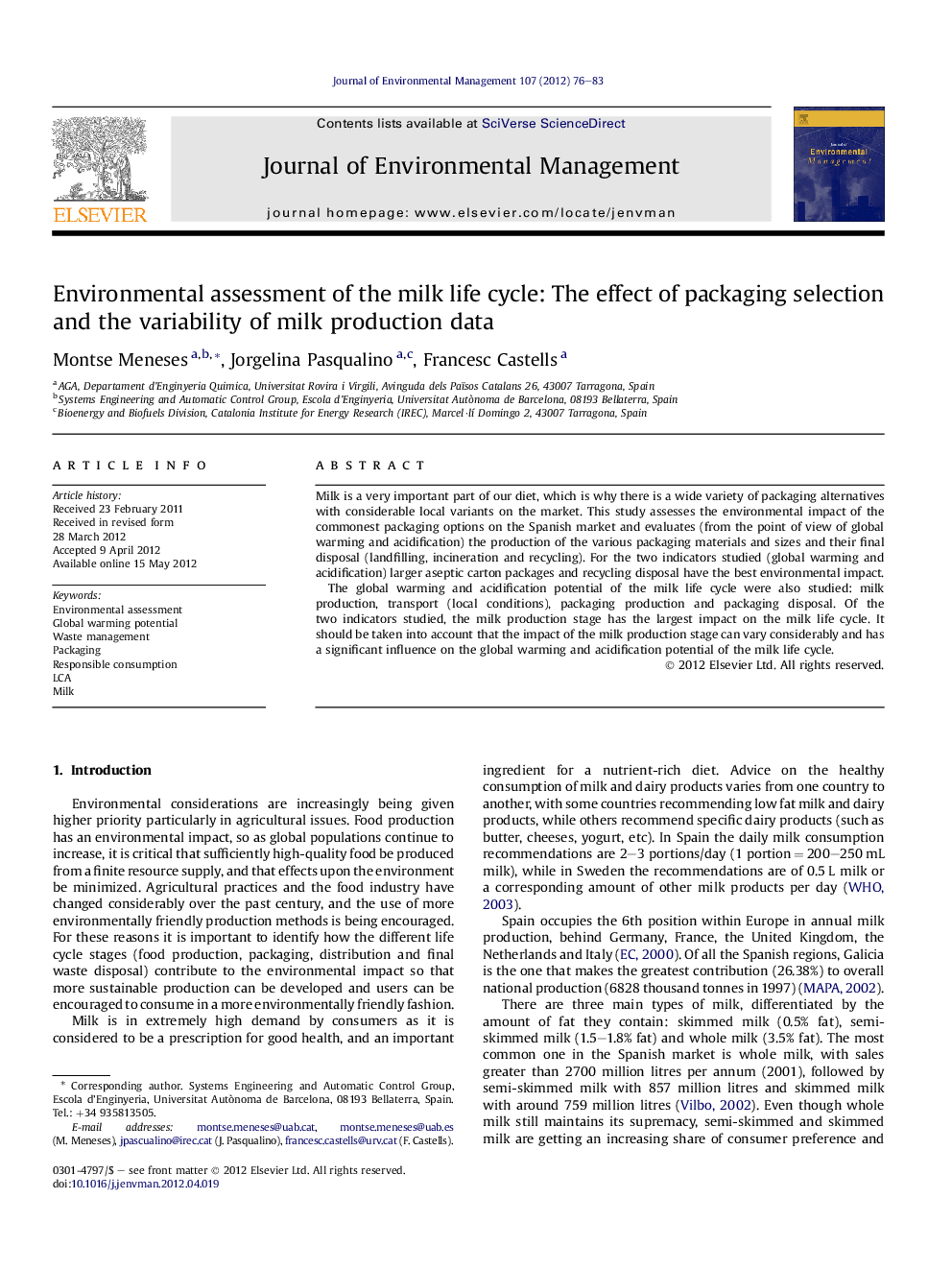| Article ID | Journal | Published Year | Pages | File Type |
|---|---|---|---|---|
| 1056665 | Journal of Environmental Management | 2012 | 8 Pages |
Milk is a very important part of our diet, which is why there is a wide variety of packaging alternatives with considerable local variants on the market. This study assesses the environmental impact of the commonest packaging options on the Spanish market and evaluates (from the point of view of global warming and acidification) the production of the various packaging materials and sizes and their final disposal (landfilling, incineration and recycling). For the two indicators studied (global warming and acidification) larger aseptic carton packages and recycling disposal have the best environmental impact.The global warming and acidification potential of the milk life cycle were also studied: milk production, transport (local conditions), packaging production and packaging disposal. Of the two indicators studied, the milk production stage has the largest impact on the milk life cycle. It should be taken into account that the impact of the milk production stage can vary considerably and has a significant influence on the global warming and acidification potential of the milk life cycle.
► The environmental evaluation has been carried out for the global warming and acidification potential impact. ► The evaluation of the milk life cycle includes the production, transport, packaging and final disposal. ► Larger aseptic carton packages and recycling disposal have the lowest impact. ► The milk production stage has the largest impact on the milk life cycle.
